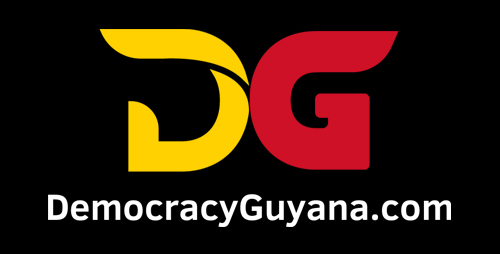APNU’s presidential candidate, Aubrey Norton, has made two BIG announcements:
𝗪𝗵𝘆 𝘁𝗵𝗶𝘀 𝗶𝘀 𝗱𝗮𝗻𝗴𝗲𝗿𝗼𝘂𝘀 𝗳𝗼𝗿 𝗚𝘂𝘆𝗮𝗻𝗮
Capital spending = roads, bridges, new industrial zones, housing schemes → the backbone of growth, jobs, and diversification.
Cut that, and you choke the economy. Businesses can’t expand without land, infrastructure, and connectivity. No new roads = no new opportunities.
Meanwhile, APNU wants to bank everything on oil revenue while tripling recurrent costs. What happens if oil prices dip? 𝗙𝗶𝘀𝗰𝗮𝗹 𝗱𝗶𝘀𝗮𝘀𝘁𝗲𝗿.
𝗧𝗵𝗶𝗻𝗸: 𝗷𝗼𝗯 𝗹𝗼𝘀𝘀𝗲𝘀, 𝗱𝗲𝗰𝗹𝗶𝗻𝗶𝗻𝗴 𝗼𝘂𝘁𝗽𝘂𝘁, 𝗿𝗶𝘀𝗶𝗻𝗴 𝗽𝗼𝘃𝗲𝗿𝘁𝘆, 𝗮𝗻𝗱 𝗲𝗰𝗼𝗻𝗼𝗺𝗶𝗰 𝘀𝘁𝗮𝗴𝗻𝗮𝘁𝗶𝗼𝗻.
Contrast this with PPP/C
PPP/C’s policy is expansionary:
𝗕𝗼𝘁𝘁𝗼𝗺 𝗹𝗶𝗻𝗲: APNU’s plan is contractionary and reckless. It’s a short road to economic crisis, while PPP/C is building the foundation for sustainable growth and prosperity.
In other words, cutting capital spending that is designed to lift output will choke investment and jobs. The production base rests on four factors—land, labour, capital, entrepreneurship—and government capex is what connects them. New road networks, utilities and serviced plots are what convert land into usable economic space. If those projects are cut, firms cannot access sites for industrial, commercial or residential expansion. No serviced land, no scale; no scale, no hiring.
That’s why the APNU approach is a recipe for an economic crisis. It leans on a single volatile stream—oil revenue—while ratcheting up the recurrent budget. Recurrent bills are permanent; oil prices are not. If Brent slips below the budget assumption, the gap widens automatically. The usual response is to slash what’s easiest to cut—capex—which then suppresses growth, weakens non-oil revenue, and forces even deeper cuts. It’s a textbook fragility loop.
𝗧𝗵𝗲 𝗮𝗹𝘁𝗲𝗿𝗻𝗮𝘁𝗶𝘃𝗲 𝗶𝘀 𝘀𝘁𝗿𝗮𝗶𝗴𝗵𝘁𝗳𝗼𝗿𝘄𝗮𝗿𝗱: 𝗦𝘁𝗮𝘆 𝘁𝗵𝗲 𝗰𝗼𝘂𝗿𝘀𝗲! Protect core capex that opens land, lowers logistics costs and crowds in private capital; pace recurrent expansions to durable, non-oil revenues; and treat oil receipts as buffers and co-financing for catalytic projects—not as a floor for permanent spending. Anything else trades short-term optics for long-term risk.





